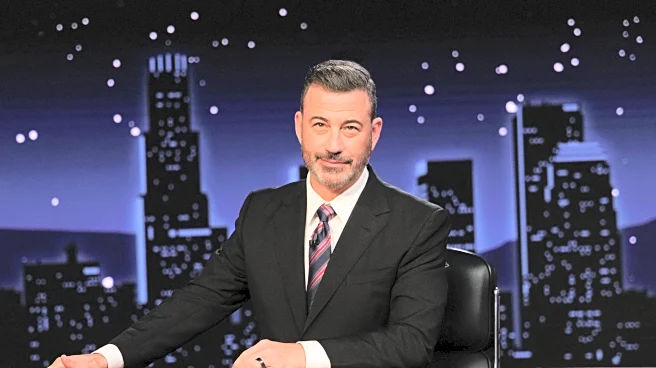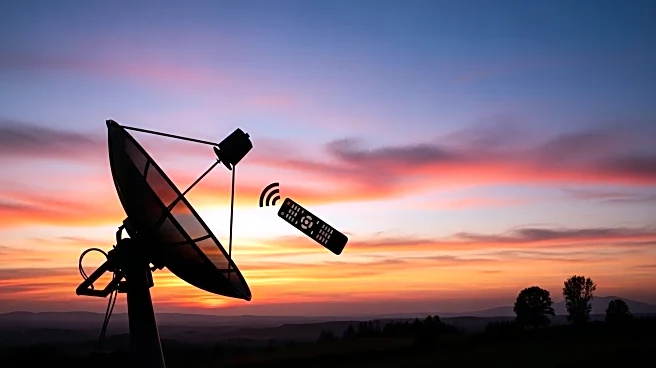What is the story about?
What's Happening?
Jimmy Kimmel's return to ABC's 'Jimmy Kimmel Live' marked a significant moment, as his 28-minute monologue reached 17.7 million views on YouTube within 22 hours, making it his most-watched monologue ever on the platform. This surpasses his previous top monologue, a 2020 remembrance of Kobe Bryant. Despite Disney reinstating the series, Nexstar and Sinclair, which own a significant portion of ABC stations, continued to preempt the show, likely contributing to the high YouTube viewership. The episode was Kimmel's third most-watched on ABC, indicating strong interest despite broadcast limitations.
Why It's Important?
The record-breaking viewership of Jimmy Kimmel's monologue highlights the shifting dynamics in media consumption, where digital platforms like YouTube play a crucial role in reaching audiences. This trend underscores the growing importance of online platforms in broadcasting, especially when traditional networks face distribution challenges. The high viewership also reflects Kimmel's ability to engage audiences with topical content, potentially influencing public discourse and media strategies. The decision by Nexstar and Sinclair to preempt the show raises questions about broadcast rights and the impact on viewership patterns.
What's Next?
As Kimmel's monologue continues to gain traction, it is likely to remain a topic of national discourse, potentially influencing future programming decisions by ABC and other networks. The ongoing preemption by Nexstar and Sinclair may prompt discussions about broadcast rights and access, possibly leading to negotiations or changes in distribution strategies. Kimmel's ability to attract large audiences online may encourage other broadcasters to explore digital-first strategies to maximize reach and engagement.
Beyond the Headlines
The success of Kimmel's monologue on YouTube may signal a broader shift in how audiences consume late-night television, with digital platforms offering more flexibility and accessibility. This could lead to changes in advertising strategies, as brands seek to capitalize on the growing online viewership. Additionally, the preemption by major station owners highlights potential conflicts between network programming and local station priorities, which could have implications for future broadcast agreements.
AI Generated Content
Do you find this article useful?














